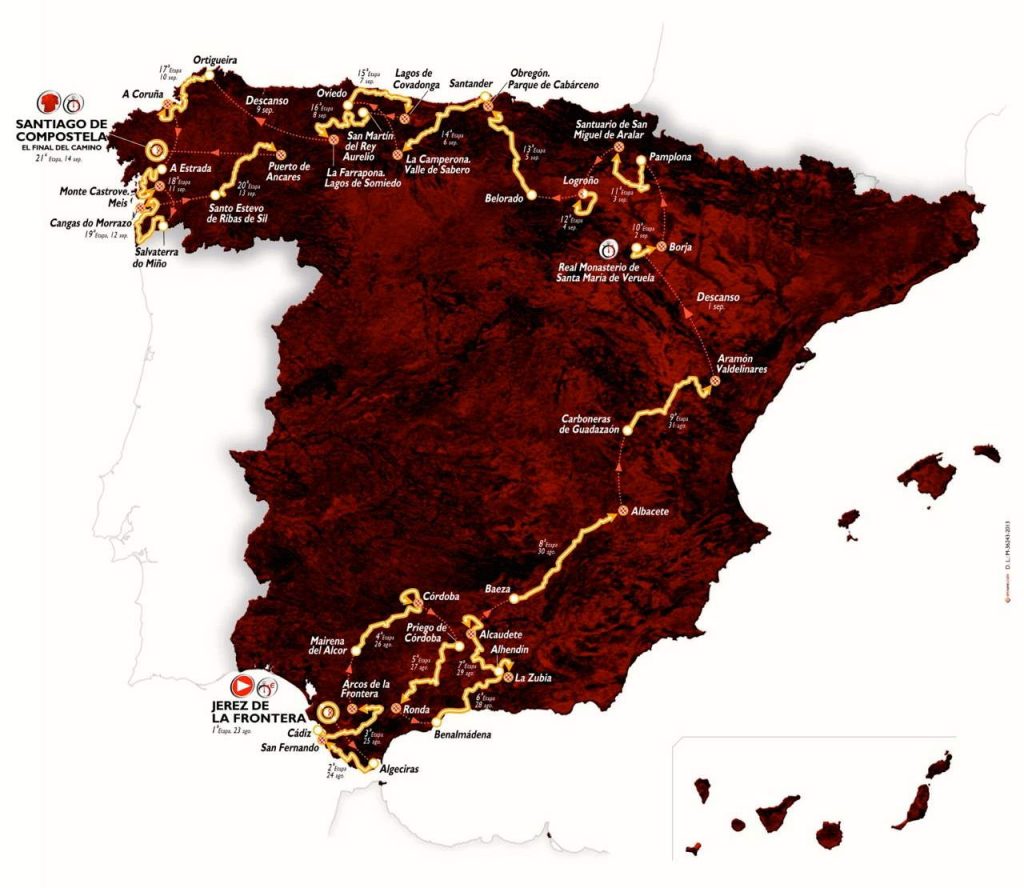Vuelta a España 2014 Stage 17 Details – it is a 190.7 km flat stage from Ortigueira to A Coruña.
The Vuelta a España returns to Galicia, specifically to the province of A Coruña. The departure of this 17th stage will take place from Ortigueira and the riders will once again have an opportunity to sprint. The arrival at A Coruña will be the final chance for sprinters to obtain a partial victory in this edition of the Vuelta a España.
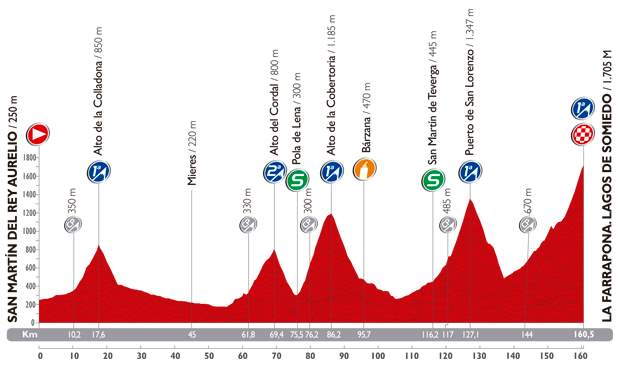
Previous stage: Vuelta a España 2014 Stage 16 Details
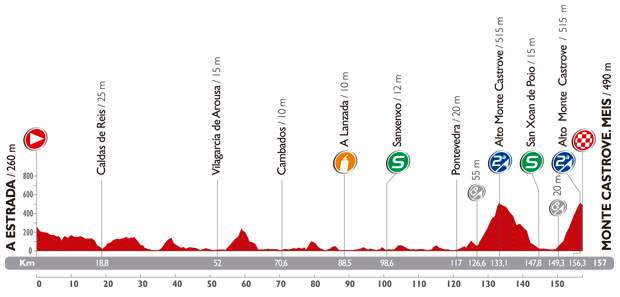
Next stage: Vuelta a España 2014 Stage 18 Details
Vuelta a España 2014 Stage 17 quick info
- DATE September 10, 2014, Wednesday
- STAGE TYPE Flat
- START-FINISH Ortigueira (10 m) – A Coruña (10 m)
- LENGTH OF THE COURSE 190.7 km
Vuelta a España 2014 Stage 17 profile
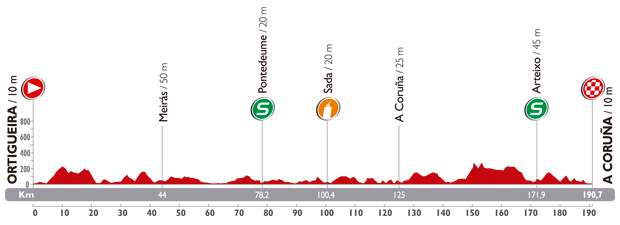
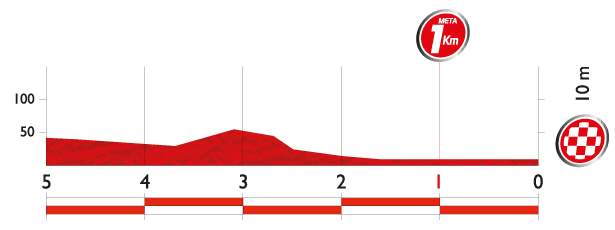
Vuelta a España 2014 stage 17 start town: Ortigueira
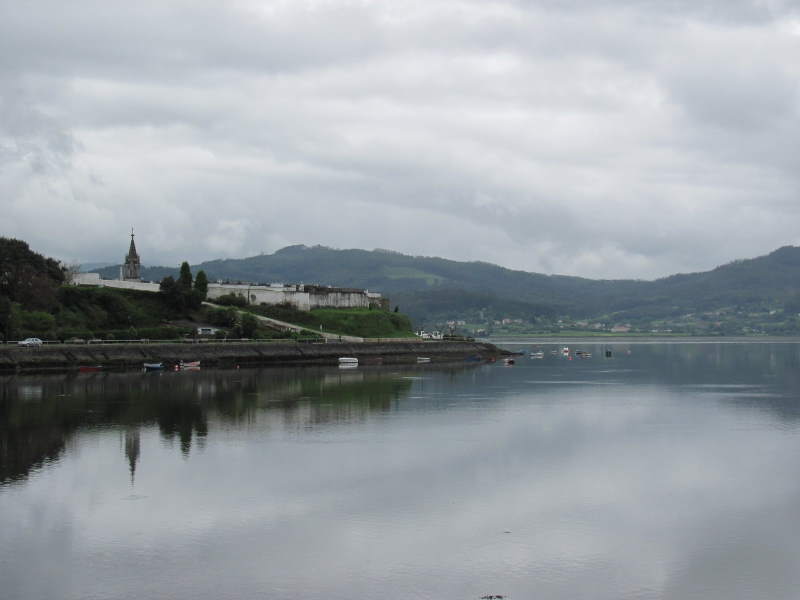
Vuelta a España 2014 stage 17 start town, Ortigueira is a seaport and municipality in the province of A Coruña the autonomous community of Galicia in northwestern Spain. It belongs to the comarca of Ortegal. It is located on the northern slope of the Serra da Faladoira, the river Mera and on the eastern shore of the Ria de Santa Marta-a winding, rock-bound, and much-indented inlet of the Bay of Biscay, between Capes Ortegal and Bares, the northernmost headlands of the Peninsula. The town is noted for its romantic surroundings and sea bathing opportunities.
Vuelta a España 2014 stage 17 finish city: A Coruña

Vuelta a España 2014 stage 17 finish city, A Coruña is a city and municipality of Galicia, Spain. It is the second-largest city in the autonomous community and seventeenth overall in the country. It is a busy port located on a promontory in the entrance of an estuary in a large gulf (the Portus Magnus Artabrorum of the classical geographers) on the Atlantic Ocean. It provides a distribution point for agricultural goods from the region.
The city is the site of the Roman Tower of Hercules, a lighthouse that has been in continuous operation since possibly the 2nd century AD. It has been declared by UNESCO as a World Heritage Site in 2009. It is surrounded by a large public park with a golf course and a former Muslim cemetery. The lighthouse features as the main emblem of the city’s flag and coat of arms.
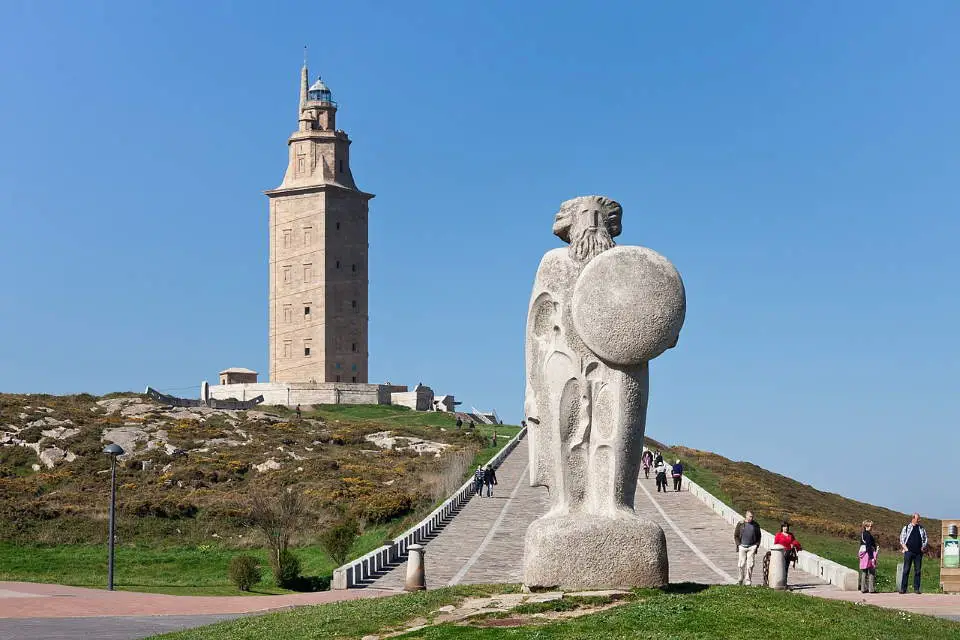
The city is also well known for its characteristic glazed window balconies, called galerías. Originally, this type of structure came about as a naval architecture solution for the challenging weather, particularly designed for rainy days. This fashion started in Ferrol in the 18th century when some of the technicians working for the Royal Dockyards had the idea of using the shape of the back of a war ship in a modern building. Soon afterwards, most sea ports in northern Spain, including the Basque region were adding these glazed window balconies to their city-port houses.
The Old Town (Ciudad Vieja in Spanish, Cidade Vella in Galician) is the name given to the oldest part of A Coruña. During the ninth and tenth centuries, the inhabitants of what was then called Faro Island (peninsula where the Tower of Hercules stands) were leaving the area due to constant attacks by the Viking fleet and settled in the area of Betanzos. In 1208 King Alfonso IX refounded the city at the present site of the Old Town and put it under his personal control, free from allegiance to the clergy or feudal lords.
In the fourteenth century the scarcely-surviving city walls of the Old Town were built, as well as three harbours: the Parrote and San Miguel. It also preserves the stronghold known as the Old Fortress, now converted into the Garden of San Carlos, in which Sir John Moore is buried. The Old City of A Coruña kept streets and squares that revive the city’s history and noble mansions and residences such as Rosalia de Castro’s house, located on Prince Street. Notable buildings are the Royal Galician Academy, the institution dedicated to the study of Galician culture and especially the Galician language, the Romanic churches of Santiago and Saint Mary,
As Bárbaras Monastery (Romanic and Baroque) and the headquarters of the Operational Logistics Force of the Spanish Army. In July, a Medieval Fair takes place in the streets of the Old City.
The city has several museums, such as the Castle of San Antón Archaeological Museum, Fine Arts Museum, Unión Fenosa Museum of Contemporary Art (MACUF) and the network of scientific museums (Casa das Ciencias, which also includes a planetarium, DOMUS, made by Arata Isozaki and Aquarium Finisterrae). In 2012, the National Museum of Science and Technology (MUNCYT) opened a branch in the city.
A Coruña’s social scene is most popular on Summer nights. Most bars and clubs are on Calle Orzan, which runs directly parallel to Paseo Maritimo on the beach side. Another popular destination, for mostly a more youthful crowd, is Los Jardines (The Gardens), a park near the beginning of Calle Real and the Los Cantones Village Shopping Centre.
A Coruña is a city that is linked to sports, from horse riding to soccer, from sailing to hockey, that practices sports with an extensive calendar of public participation events.
Sources
- La Vuelta official website
- A Coruña on Wikipedia
- Tower of Hercules on Wikipedia
